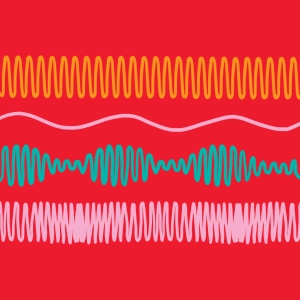 Video: Amplitude modulation
Video: Amplitude modulation
The modulator is an element in the chain of transmission of information…it is located on the emitter side of that chain.
Amplitude modulation is a phenomenon involving mixing of or interference between two electrical signals.
The first is the low frequency signal that contains the useful information that one wants to transmit – this is the modulating signal.
The second is the carrier. It has a high frequency which will be modulated, then emitted.
To simplify matters, let’s consider a purely sinusoidal signal is to be transmitted. It possesses the following characteristics:
- a maximum amplitude , Am
- a continuous component or offset V0
- and a frequency, Fm.
The carrier signal oscillates at a frequency Fc, much larger than that of the modulating signal.
The mixing of the two signals is carried out by an electronic component that is here represented by the symbol of a multiplier. The output signal generated by this component is the amplitude modulated signal. It displays beats in the interior of an envelope whose amplitude varies between two fixed values.
(…)
The form of the modulated signal depends on the offset voltage V0 of the modulating signal.
(…)
The rate of modulation, corresponding to the ratio between maximum amplitude , Am, and offset V0, determines the appearance of the modulated signal.
A modulation rate less than 1 produces an envelope that reproduces the modulating signal. This oscillates at the frequency Fm.
In this case, detection of the useful signal, or demodulation, is simple to achieve.
A modulation rate greater than 1 corresponds to a phenomenon called overmodulation. The alternating positives and negatives of the envelope overlap.
The detection of the useful signal is difficult to achieve.
If the modulating signal doesn’t involve an offset, the modulation is said to not have a carrier.
